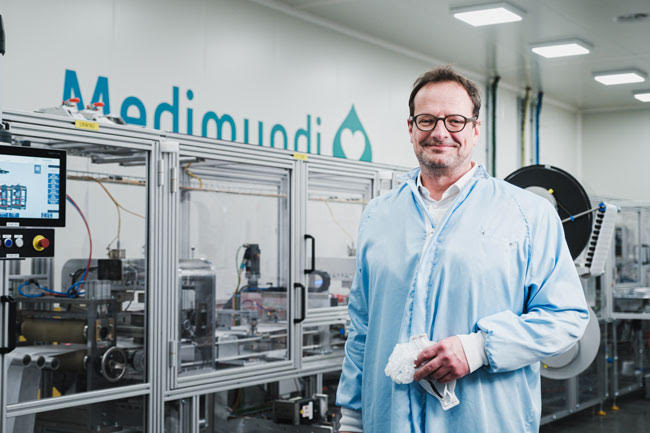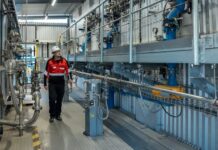What do printing and packaging converting have in common with playing cards and board games? One name: Cartamundi! The largest card manufacturer worldwide, its joint venture in India is known as Parksons Cartamundi. In collaboration with Antwerp University, the company recently created a new division, Medimundi, and invested Euro 3.5 million in its first production lines for certified medical FFP2 masks. After six months of preparations, mask production is now fully operational at the Medimundi site in Belgium, which for obvious reasons, carries the nickname ‘Pokémon Factory.’
Based on Antwerp University’s mask specifications after intensive consultation with medical personnel, the production line was built by machine manufacturer Cloostermans, enabling Medimundi to produce masks with a filtration rate as high as 98%. FFP3 masks will soon be added to the company’s portfolio.
The company insists that the operation is a strictly local initiative for the time being. So far, no exports of masks are planned – the focus is entirely on the Belgian market’s high demand. Medimundi’s CEO David Germis explained that once the project proves to be mature, the company may set up mask production lines in one or more of its other factories around the world. One of the company’s main three sites in the United States may be considered for the next step. Germis also disclosed that “It is our ambition to innovate further and to develop masks that correspond to the requirements of specific target groups.”
Headquartered in the town of Turnhout, Belgium, less than 50 kilometers from Antwerp, Cartamundi is the world’s number one manufacturer of playing cards, collector cards, and board games. The company was established in 1970 as a joint venture between packaging and printing companies Van Genechten, Brepols, and Biermans, but its history as a printer goes back as far as 1765. At present, the company employs some 3,000 people worldwide, achieving a sales turnover of close to half a billion euros.
Its growth and global reach accelerated with a series of acquisitions that wiped out virtually all major competition. Starting in 1999, Cartamundi took possession of its competitors in Switzerland, Germany, the UK, France, Spain, and Japan. In 2005, it entered the Polish and Brazilian markets by acquiring the two largest manufacturers there. In the US, it took over Yaquinto in 2007, Hasbro’s board game factories in 2015, and, on top of it all, the United States Playing Card Company by the end of 2019.
In 2010, Cartamundi established a 50/50 joint venture with Parksons’ Games and Sports, an Indian company manufacturing playing cards. The joint venture built a new factory in 2013 in Pardi in Gujarat in Western India and not far from Mumbai.
Parksons Cartamundi
Parksons Cartamundi specializes in playing, trading, collectible, educational and customized cards, and card-related games. More than 4,000 wholesalers are selling Parksons’ products across India. Brands include UNO, Scrabble, Club 7, Merelane, 555, Cheetah, Party Poker, and Duronto, to mention only a few.
In addition to playing cards, Cartamundi manufactures all kinds of collector cards, bespoke card sets, puzzles, and such famous board games like Monopoly, Cluedo, Pictionary, Trivial Pursuit, and many many others in multiple versions and languages. Given the general trend towards electronic games, the company has also been compelled to enter what it calls the ‘hybrid gaming experience’ using technologies such as RFID, image recognition, and touch codes integrated into its board-based cards and games production.
With its packaging and converting experience, its decision to produce medical masks seems to be a rather logical step. Even though certified FFP2 and FFP3 manufacturing specifics require essential adaptations to the production lines, these processes are quite familiar for converters and we expect others to follow suit.
This article has been amended on 8 February 2021. – Editor






